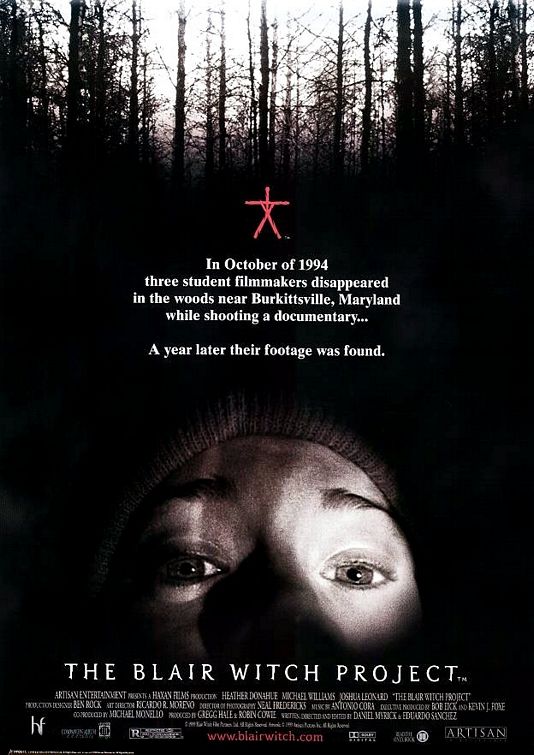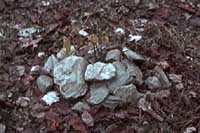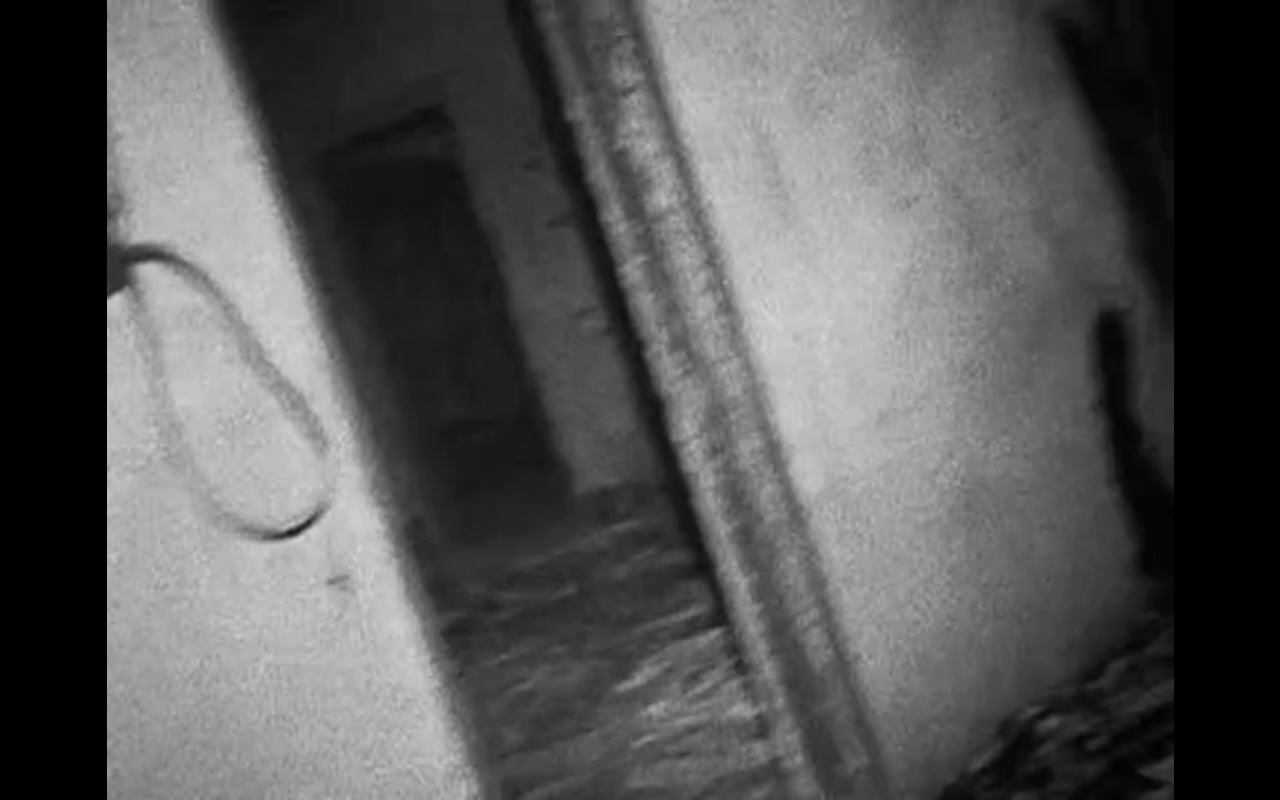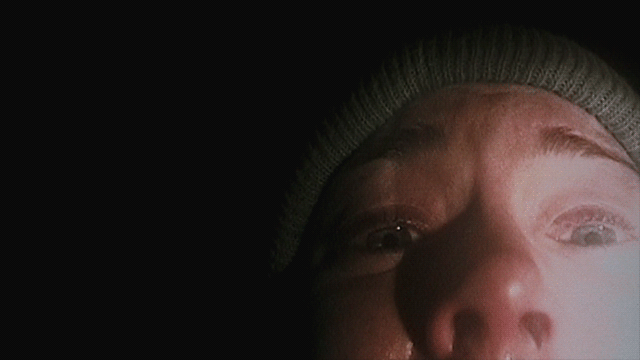 |
| Figure 1: Movie Poster [Still Image] |
The Blair Witch Project (1999) is an American horror film written and directed by Eduardo Sánchez and Daniel Myrick. The film revolves around a story of three student filmmakers (Heather Donahue, Joshua Leonard, and Michael Williams) who disappeared on October 1994 in the woods near Burkittsville, Maryland. They had gone into the woods to film a documentary about the fabled Blair Witch. The viewers are told the three were never seen or heard from again, and the film you are about to see is from their recovered equipment, found in the woods a year later by the police. The entire movie documents their adventures leading up to their final minutes.
The film has a strong emphasis on foreshadowing throughout the film. An example of this would be when they find a cemetery with 7 Cairns in it. Each one of these Cairns represents one of the dead children. Josh accidentally knocks over one of these Cairns and it proves to be fatal action that foreshadows subsequent events. Their tents were attacked during the night and what they discovered in the morning was puzzling. Only Josh’s items have been covered in blue slime when no one else’s had. It was evident that Josh had been marked by the Witch because he is the first one to go missing and has been presumed to be dead.
 |
| Figure 2: Rock Pile [Still Image] |
Another example of foreshadowing would be when Heather and Mike land themselves at a house in the woods. The large stick figures seen foreshadow the death of anyone who enters it. When Heather enters the house, a hangman’s noose is seen next to the doorway. It also represents the Rustin Parrs house where the child killer was hanged claiming to be possessed by the Blair Witch.
 |
| Figure 3: Hanging Noose [Still Image] |
Apart from that, what makes this film a success is the very effective connection it produces with the audience as a hand held camera is being used throughout. Due to the fact that this film seems very real, it was able to extend the mounting anxieties experienced by the characters to the audience.In a review by Total Film, they highlighted this point when they state, “It cranks up the "realism", enhanced by the shaky hand-held nature of the footage shot by the three campers who genuinely do appear to be scared out of their wits.” (Total Film, 1999).
 |
| Figure 4: Heather Crying [Still Image] |
Unlike other horror films that depict gore, blood and demons, the audience never gets to actually see anything in The Blair Witch Project. The horror lies in how the film is made, and the way the actors show their fear. It is more a psychological horror than an obvious scary monster. Maslin is summarizes this point accurately when she states, ''The Blair Witch Project'' is a nifty example of how to make something out of nothing. Nothing but imagination.” (Maslin, 1999) This imagination leads to the insecurity that the trio felt that was brilliantly captured because within everyone, there is the creepy fear about being lost in the woods.
In conclusion, the timeless features, namely the use of hand held camera in this film has unfold and brought a fresh new approach to the horror genre of cinema as it never gets old and boring to scare the audience from all around the world. This can be supported with a statement from Collins review when he highlights “Scary without being explicit, it's a 1990s cinematic landmark.” (Collins, 1999)
List of Illustrations:
Figure 1 The Blair Witch Project (1999) [Poster] at http://www.nerdspan.com/wp-content/uploads/2013/10/the-blair-witch-project-poster.jpg (Accessed on 18 February 2014)
Figure 2 Rock pile (1999) [Still Image] at http://www.castleofspirits.com/rockpile.jpg (Accessed on 18 February 2014)
Figure 3 Hanging Noose By The Doorway (1999) [Still Image] at http://www.angelfire.com/md/blairwitch/images/noose.gif (Accessed on 18 February 2014)
Figure 4 Heather Crying (1999) [Still Image] at http://media.portable.tv/wp-content/uploads/2011/10/blair-witch-project-portable.gif (Accessed on 18 February 2014)
List of Bibliography:
Collins, Andrew (1999) The Blair Witch Project At: http://www.radiotimes.com/film/nbcc9/the-blair-witch-project (Accessed on 18 February 2014)
Maslin, Janet (1999) The Blair Witch Project (1999) At: http://www.nytimes.com/movie/review?res=9C02E6D91E3CF937A25754C0A96F958260 (Accessed on 18 February 2014)
Total Film (1999) The Blair Witch Project At: http://www.totalfilm.com/reviews/cinema/the-blair-witch-project (Accessed on 18 February 2014)














